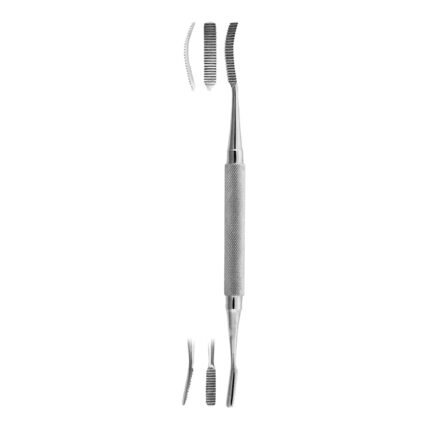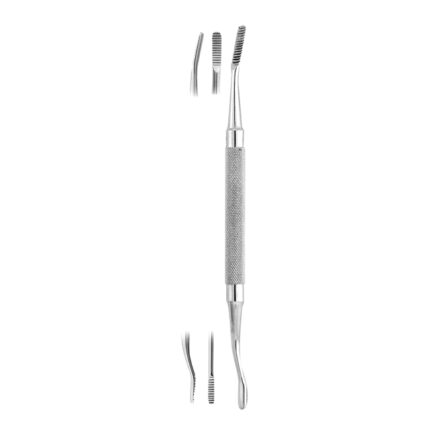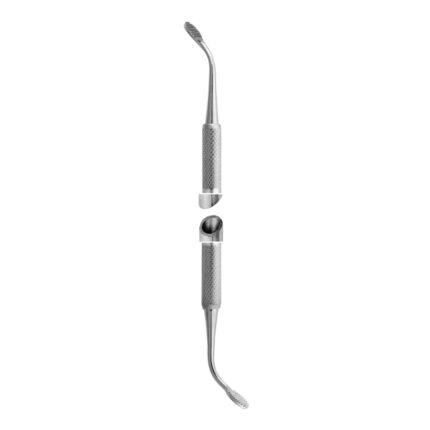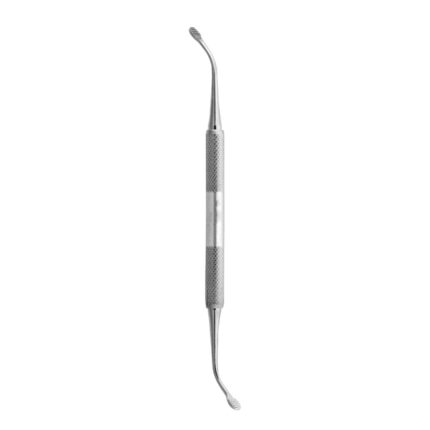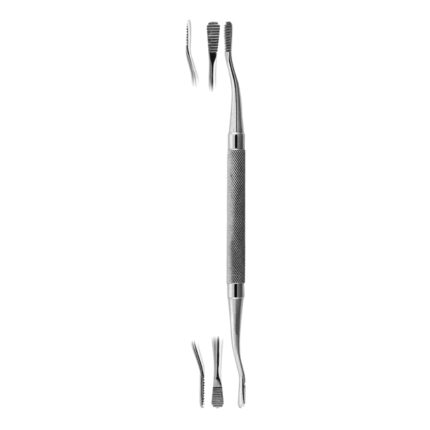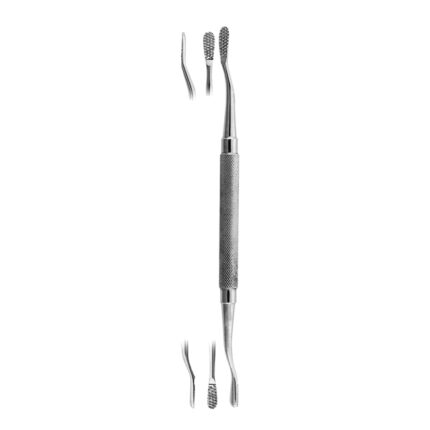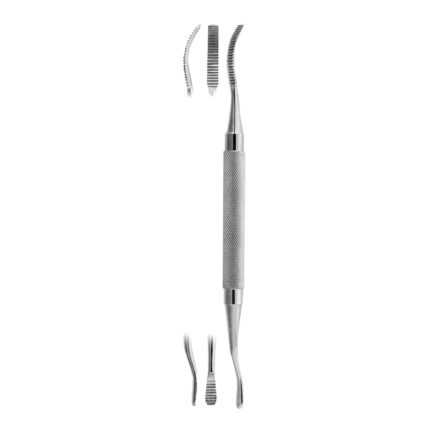Bone files are surgical instruments used in orthopedic and oral surgery for shaping, smoothing, and contouring bone surfaces. They are commonly used in procedures such as bone grafting, fracture repair, and dental implant placement. have a distinctive design with a flat, tapered, or rounded working end and a handle for grip and control. They are typically made from high-quality stainless steel or other medical-grade materials that are durable and corrosion-resistant.
There are several types , each with its own shape and application:
- Straight Bone Files: straight working end and are used for shaping flat bone surfaces or accessing narrow areas.
- Curved Bone Files: Curved have a slightly curved or angled working end, allowing for easier access to curved or concave bone surfaces.
- Rasp Bone Files: roughened surface on the working end, resembling a rasp or file. They are used for rough shaping and smoothing bone surfaces, similar to filing wood or metal.
- Tapered Bone Files: gradually tapering working end, allowing for precise contouring and blending of bone surfaces.
such as bone chisels, osteotomes, and rongeurs, to perform various bone-related procedures. They are essential tools for orthopedic surgeons, oral surgeons, and periodontists who work with bone tissue during surgical interventions.
it’s important for surgeons to follow proper sterilization protocols and handle the instruments with care to prevent damage or contamination. Regular maintenance, such as cleaning and sterilization, helps prolong the lifespan and effectiveness ensuring optimal performance in surgical procedures.



